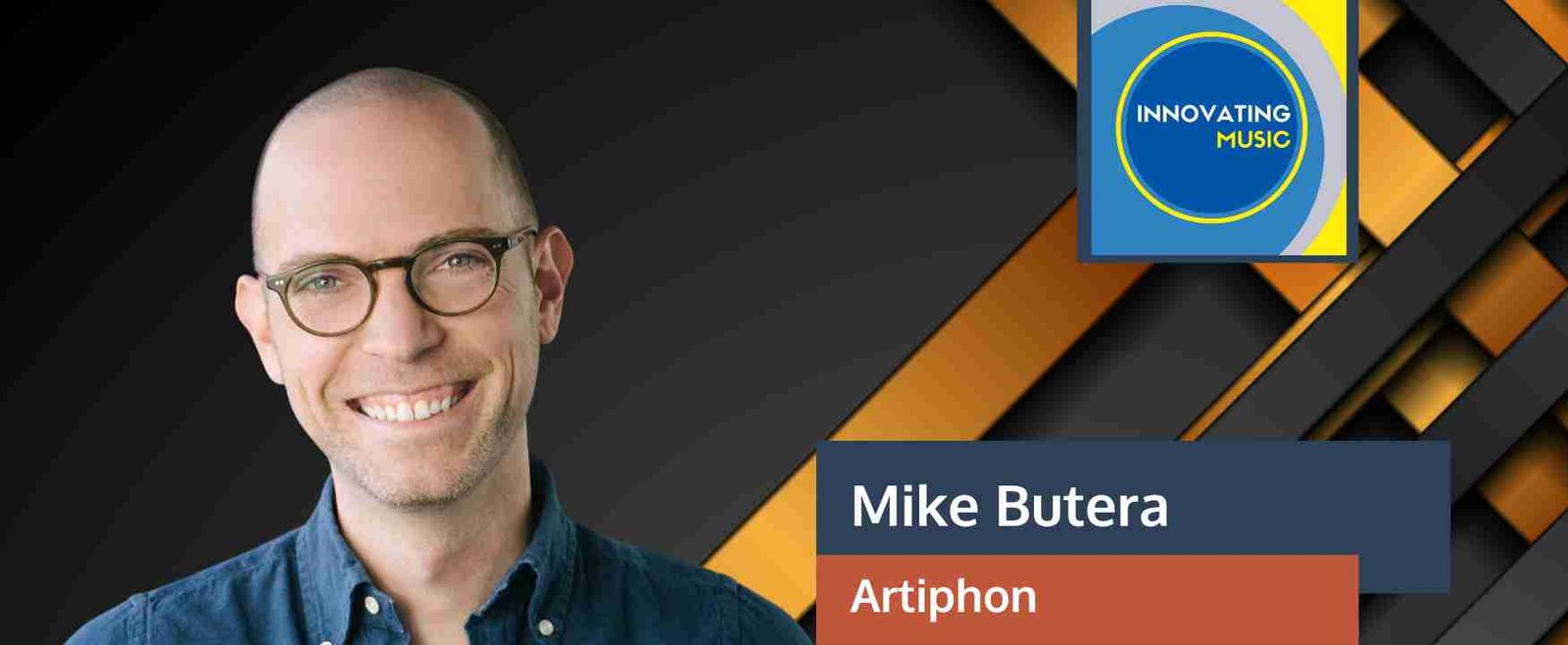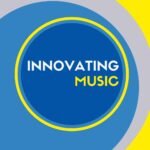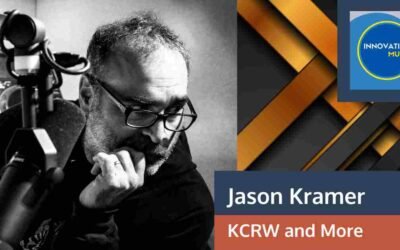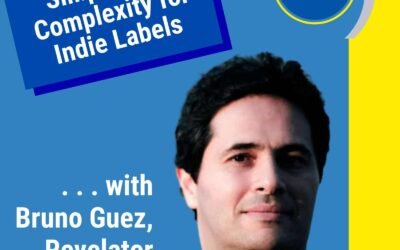Gigi Johnson: Welcome to Creative Innovators. I’m your host, Gigi Johnson, and I was excited this week to talk with Mike Butera, founder and CEO of Artiphon.
They’re a music tech company designing smart instruments anyone can play. Mike and I discussed reimagining musical instruments, challenging traditional norms, and redesigning music as an inherently interactive, casual experience.
He’s had a fascinating journey—connecting his own music performance with studies in philosophy, sociology, and sound studies; moving into consumer-facing design and marketing; and then launching his own company, now introducing its third product, the Corda, in late 2023 through Kickstarter.
So, enjoy this really different conversation with Mike Butera.
Gigi Johnson: This show is about people who innovate in all walks of life. You’ve innovated in many walks of life and connected them together, which I find fascinating. Mike, can you start us out with what you’re doing now—what your main adventure is?
Mike Butera: I’m currently, and have been for a while, running Artiphon, a music technology company. Our goal is to reimagine musical instruments as friendly, fun, casual consumer devices.
The “smart home” revolution we’ve seen in other areas can apply to music—but the real point is that far more people could enjoy playing if instruments weren’t designed primarily for pros. We want to design instruments for everyone else.
I lead the company, oversee product design, and focus on figuring out what’s next in helping more people be creative. Right now, we’re launching a new product we’re excited about called Corda—our latest smart instrument that’s heading into manufacturing.
Gigi Johnson: I want to come back to the Kickstarters and the “why,” but let’s go backward. Why did you feel this company needed to be started?
Mike Butera: The year was 2010. I’d just earned my PhD in sound studies at Virginia Tech, moved back to Nashville, and was teaching sociology and philosophy—really enjoying that.
For me, it was a continuum: thinking about how people shape the way the world sounds, and how that changes constantly. My dissertation research was on phenomenology—not just perception, but how the world presents itself, how you respond, how you interact with it.
With sound, we control acoustic spaces in many ways—doors, windows, headphones, putting on a record, walking away. Often, those are defensive moves: masking or avoiding sound. I wanted to focus on the creative side—how can people change how the world sounds in a creative, playful way?
As a lifelong musician, musical instruments were where I wanted to start. But instruments had become professional devices, expected to be played “well,” with a long, structured training process that’s socialized and normalized.
Gigi Johnson: The Met’s musical instrument exhibit shows how designs evolved and then “locked.” That’s culture—and economics. Sheet music standardized orchestration. You wanted to break that.
Mike Butera: Exactly. Look at photography, video, writing—people aren’t intimidated. They take another picture if the first isn’t great. Music hasn’t had that casual, accessible culture in a century. Now we can redesign music as inherently interactive and less intimidating. That became the foundation for Artiphon.
Gigi Johnson: You were teaching when a friend suggested starting a product design firm?
Mike Butera: Right. I thought I’d be a tenured professor, but said yes. We designed smart speakers and cultural tech for other companies—products that did well at Costco and Target. I learned product design, manufacturing, and marketing end to end.
Gigi Johnson: You weaponized your academic work—how people think, buy, and experience products—into design practice.
Mike Butera: Yes. Sociologists are taught to observe, not interfere, but meaningful change often comes from engaging. I started asking how we could do things differently—looking at power, influence, and cultural capital.
Historically, instruments used the best tech of their time—cutting-edge at invention, later frozen by standardization. Digital production lets anyone make any sound, but interfaces stayed pro-focused. In 2010 the iPad and GarageBand changed that: kids could make beats and feel creative. I wanted to bring back tactile, muscle-memory playing—with digital’s benefits.
Gigi Johnson: You’re a musician yourself.
Mike Butera: I started violin at eight after seeing the school orchestra. For six years I learned only from sheet music—no improvisation, often without even hearing recordings.
I grew up in Pennsylvania, worked in our family flower shop. My dad is a floral designer; my mom’s a painter and teacher—very creative, not musical. They supported my decision to study violin in college.
At first I didn’t know the path—maybe a band, maybe studio work. I fell in love with studios, and with philosophy and sociology, eventually triple-majoring.
Gigi Johnson: You even designed your own academic path.
Mike Butera: Being homeschooled later in school let me customize learning. In college I talked my way into the honors program and built a path across music, philosophy, and sociology. At Virginia Tech I joined a brand-new interdisciplinary PhD program and focused it on sound studies.
Gigi Johnson: How did that turn into founding Artiphon?
Mike Butera: Consulting taught me to take products from concept to market. For instruments, I didn’t want a singular device; I wanted a multi-instrument—playable in many ways. My theory: if a device can do multiple things, any one of them feels less intimidating. You’re not “wrong”; you’re exploring.
That became Instrument 1—our first product.
Gigi Johnson: Describe it for listeners.
Mike Butera: A slim bar form with a touch/pressure surface and motion sensing—playable upright (strum), flat (piano-style), or like other instruments. It took four years and six prototype generations; we launched on Kickstarter in 2015.
We used force-sensing resistors under a rubbery surface to capture touch, pressure, velocity, and slides. Early testers wanted tactile string references, so we added ridges. It could also do things no acoustic stringed instrument can—like per-note effects.
Gigi Johnson: Traditional players sometimes expected it to behave exactly like a guitar.
Mike Butera: Right—that tension between physical and virtual is the point. We map familiar gestures into digital spaces while unlocking new possibilities. With Corda we removed the literal strings, kept pads and a strummable area in a ukulele-sized form—approachable and versatile.
Gigi Johnson: Orba came next.
Mike Butera: Orba is a handheld, circular instrument with pads for drums, bass, chords, and lead, plus motion controls. It’s portable and inviting—great for quick music-making.
We’ve also explored AR with OrbaCam—making music directly in live video on your phone—and collaborations like interactive music lenses with Snapchat. A lot of the same UX from our hardware translates to software.
Gigi Johnson: Retail is tough—stores are shrinking. How do you sell this?
Mike Butera: Kickstarter is our launch moment—really, a pre-launch. Once a new instrument works and we can make music on it, we take it to Kickstarter to see if people want it before we manufacture. That’s worked three times.
In parallel, we talk with retailers in musical instruments, consumer electronics, and lifestyle. Retailers take fewer risks at launch; they want proof. Kickstarter helps us show demand. Then we scale through a mix of direct-to-consumer (our website), Amazon, and select retail partners like the MoMA Design Store.
Direct lets us build community and keep a relationship with customers. People post songs, share tips, and support each other in casual music-making. That engagement loop is powerful.
Gigi Johnson: You’ve also had to learn the business side.
Mike Butera: I’m glad we talked about design and culture and “why,” but the vehicle for all this is a business. It’s very different from teaching grand theories of capitalism—this is capitalism at a product-and-team scale. It’s been great to learn.
Gigi Johnson: If listeners want to collaborate or reach out?
Mike Butera: We’re exploring new ways to get artist content into our instruments and to use them as controllers for multimedia music. I’m open to collaborations. Reach us via the Artiphon website—or email me directly: Mike at Artiphon.
Gigi Johnson: Excellent. We’ll include links in the show notes. Mike, thanks so much for joining us.
Mike Butera: Thank you. This was really fun.
Gigi Johnson: Thanks for listening to Creative Innovators. Visit creativeinnovatorspodcast.com and find us on Substack, where we’re building a browsable matrix of past shows along with career adventure guides so you can put these tools to work and become a bigger, better creative innovator. We’re launching on additional platforms this year—join our lists to see what’s next.









